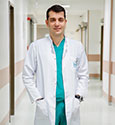Across the pond they are called ‘man boobs.’ It can be very embarrassing for a woman when she is dating a man with breasts larger than hers. It is also embarrasing for the gentleman as well. The accurate medical term for the condition is gynecomastia. As many as 30 to 60 percent of adult men will at some point develop excessive growth of breast tissue.
While the men with this condition may not believe it, gynecomastia is quite common. You will see it predominantly in newborns, boys going through puberty and older men. In the vast majority of cases, gynecomastia is not a serious problem. However, it may be psychologically difficult to cope with. Apart from affecting self-confidence and causing embarrassment, some men and boys may also experience pain in their breasts.
Gynecomastia is not caused by extra fat from being overweight. It is caused by extra breast tissue. So, doing exercise or losing weight will not get rid of it. There are other conditions, such as pseudo-gynecomastia, in which fat builds up in the breasts, and are sometimes associated with being overweight or obese. Most males who develop gynecomastia find that it goes away on its own. A study published in the U.S. journal Pediatrics reported that in over 75% of cases of pubertal gynecomastia, signs and symptoms resolve within one year.
Gynecomastia may have several causes including a Hormone imbalance between the sex hormones testosterone and estrogen. Estrogen, the "female" hormone, makes breast tissue grow, while testosterone, the "male" hormone, has inhibitory effects at the breast tissue level (it stops estrogen from making breast tissue grow). Over 50% of newborn males are born with enlarged breasts. This is because they have high levels of estrogen, which came from the mother. As the estrogen levels return to normal, the swelling goes away, usually within a few weeks.
Swollen breasts become more common among males as they get reach middle and old age. This is because older men produce less testosterone. Older males are usually fatter than young men, which results in more oestrogen being produced. Studies show that overweight men produce more oestrogen. When the male breasts swell very suddenly, it can be a sign of kidney failure.
Those men who like to be considered party animals should take note. Most medical and family practice websites mention that alcohol abuse raises the risk of enlarged male breasts. Several studies have looked into whether there might be a link between cannabis use and gynecomastia. Some have found an association while others have not detected a significant link. The majority of medical and health websites mention a link. Experts say there is a link between marijuana, amphetamines, methadone, heroin and gynecomastia risk.
Blood pressure medicines, hormones, and other medications may cause an increase in estrogen. Steroid abuse can also cause breast growth. The drugs definitely associated with the onset of gynecomastia are spironolactone, cimetidine, ketoconazole, hGH, estrogens, hCG, anti-androgens, GnRH analogs and 5-α reductase inhibitors. Medications probably associated with gynecomastia include risperidone, verapamil, nifedipine, omeprazole, alkylating agents, HIV medications (efavirenz), anabolic steroids, alcohol and opioids. If the gynecomastia appears to be caused by a medication, the doctor may recommend switching to a different drug, discontinuing it, or carrying on. If the course of medication is not long-term, the condition will be temporary.
There are medications that men can take for their man boobs. Usually, the medications contain hormonal component that will affect the hormonal system in the body. It’s entirely different when men get breasts enlargement due to the deposit of fat tissues under their breasts that we called as man boobs. This condition can be normalized by doing some exercise, especially cardiovascular exercises. It will burn out those fats in the chest area and also tighten the chest muscles. Of course, the exercises have to be regularly done
Procedures such as breast reduction surgery are not usually available on the NHS unless there is a clear medical need for them. For example, if you have had gynecomastia for a long time, it has not responded to other treatments and it is causing you a lot of distress or pain, your General Practitioner may refer you to a plastic surgeon to discuss the possibility of surgery. It’s much less invasive now than it used to be, using ultrasound-assisted liposuction to target excess tissue in what’s usually an outpatient procedure.
Always see your GP if the area is very painful or there is an obvious lump. Sometimes, the lump may need to be removed.
Gynecomastia is not related to breast cancer but if worried about breast swelling, see a General Practitioner.
A report in the British Medical Journal found that about 80 percent of patients studied responded well to taking the drug Tamoxifen, often associated with breast cancer treatment, to reduce their excess breast tissue.


